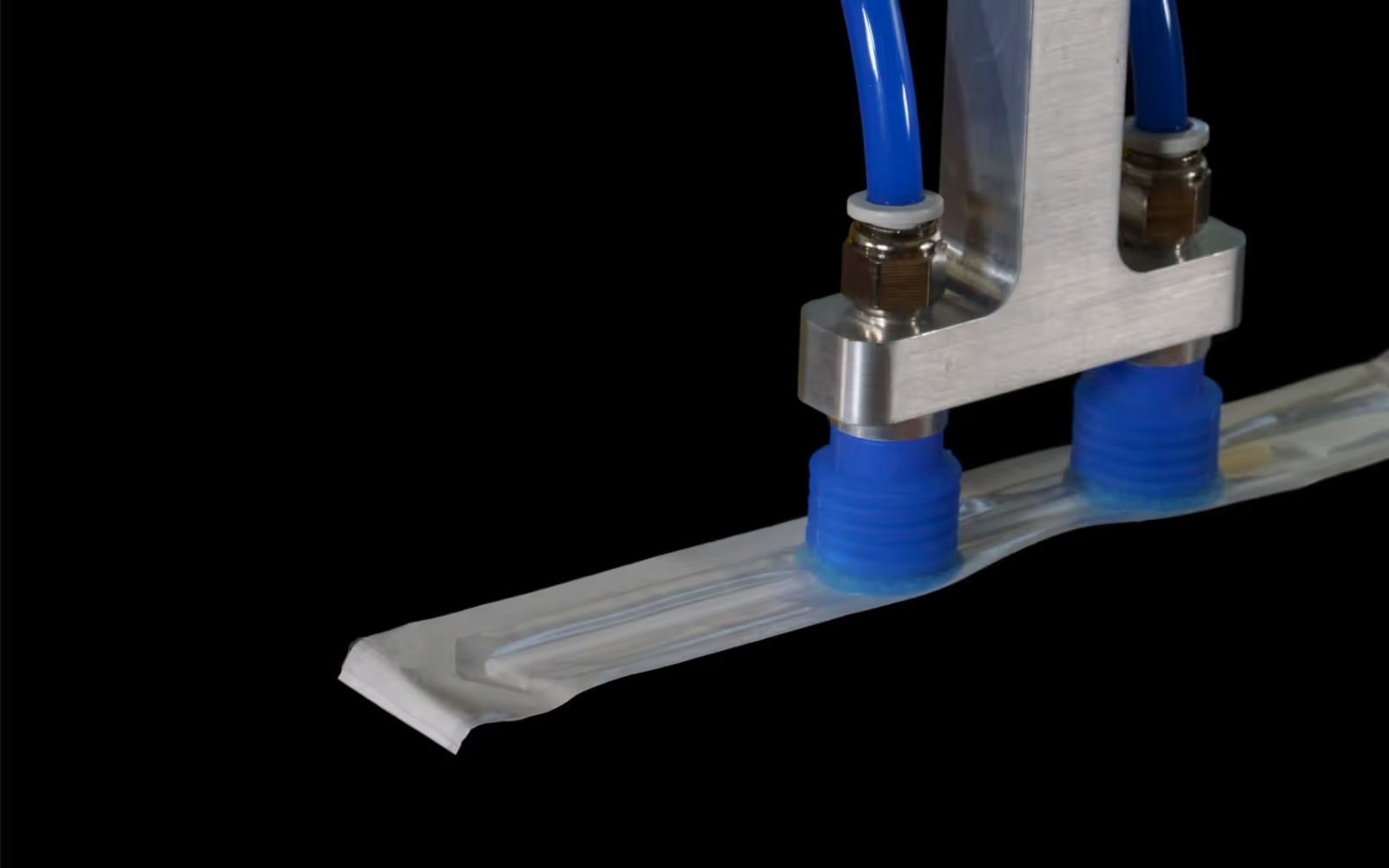The medical and pharmaceutical industries usually have stringent standards for precision, hygiene, and traceability. Traditional manual methods for kitting and assembly, from diagnostic test kits to surgical instruments and drug packaging, are often time-consuming and prone to human error. Robotic kitting and assembly are revolutionizing this landscape by offering a sterile, precise, and highly efficient alternative. This transition enables manufacturers to automate repetitive, mundane tasks, thus ensuring high levels of quality and patient safety.
The Anatomy of a Robotic Kitting System
A robotic system for medical and pharmaceutical applications is a precise integration of specialized hardware and intelligent software. The basic components of such a robotic system often include the following-
- The Robot Arm: Chosen for its dexterity and speed, it handles delicate components with gentle yet precise movements.
- End-of-Arm Tooling (EOAT): These tools are often customized for use in sterile environments, utilizing materials and designs that are easy to clean. They may include specialized grippers for handling glass vials, syringes, or intricate plastic components.
- High-Resolution 3D Vision: This camera system is the "eyes" of the robot. It captures a detailed, three-dimensional image of components, regardless of whether they are transparent, reflective, or small.
- Advanced Robotics Software: This is the "brain," responsible for interpreting the visual data and directing the robot's actions. It must be powerful enough to handle a variety of parts while maintaining a precise, repeatable process.
The Critical Challenges of Medical and Pharma Automation
Automating processes in this sector presents unique hurdles that go far beyond typical manufacturing challenges:
- Operating in Sterile Environments: Robots must be designed to work in clean rooms, where they cannot contaminate products and must be easy to sanitize.
- Handling Delicate and Small Parts: Many medical and lab components—such as glass vials, needles, and micro-components—are extremely fragile and require gentle, accurate handling to prevent damage.
- Product Diversity: A single diagnostic kit may contain dozens of different items, from swabs and vials to small leaflets, all of which need to be picked and placed in a specific order.
- Regulatory Compliance: The need for lot number traceability and quality control is non-negotiable. Every component must be tracked to ensure patient safety and meet strict regulatory standards.
The Cure: How Advanced AI and Vision Address Industry Needs
Advanced robotics software like CapSen PiC is specifically designed to address these complex challenges. It acts as the intelligent core of the system, enabling automation where it wasn't previously possible.
- Vision-Guided Precision: The software's ability to accurately identify and locate even delicate, shiny, or transparent objects is critical for handling common medical parts like glass vials or plastic tubes. This eliminates the need for expensive and cumbersome part feeders.
- Flexibility for Variety: The software can process data from a wide range of parts, allowing a single robotic cell to kit multi-component products without re-programming. This makes it ideal for assembling complex diagnostic kits.
- Intelligent Motion Planning: CapSen PiC's algorithms calculate a safe, efficient path for the robot's arm, ensuring it can pick a specific part from a crowded bin without damaging other components or the robot itself. This adds a layer of safety and efficiency critical to pharmaceutical and medical device production.
A Real-World Prescription: CapSen PiC in a Pharma Facility
Consider a facility that manually assembles pharmaceutical sample kits. This process is time-consuming and carries the risk of human error in packaging the correct combination of items.
By introducing a robotic system powered by CapSen PiC, the process is transformed. A robot arm uses its 3D vision system to "see" into multiple bins containing different drug samples, leaflets, and a variety of packaging materials. The software then guides the robot to precisely pick and place each item into the kit box in the correct order. The system can be integrated with the facility's existing data management system to log which items were placed in which kit, providing a full audit trail for quality control and regulatory compliance. The result is a dramatic increase in throughput, near-perfect accuracy, and a safer, more hygienic process for a highly sensitive industry.

